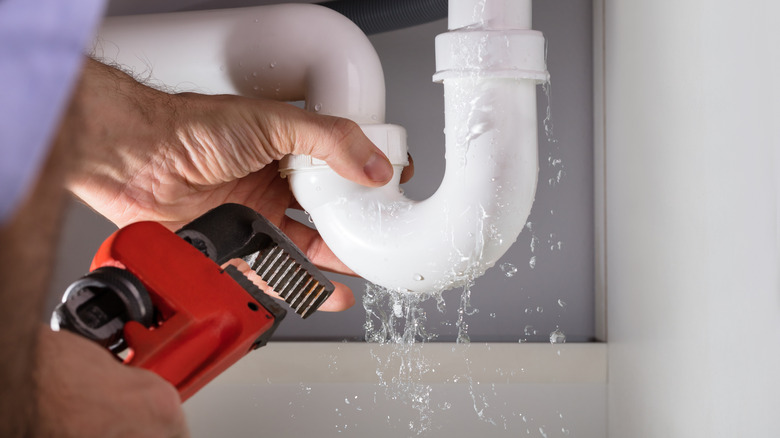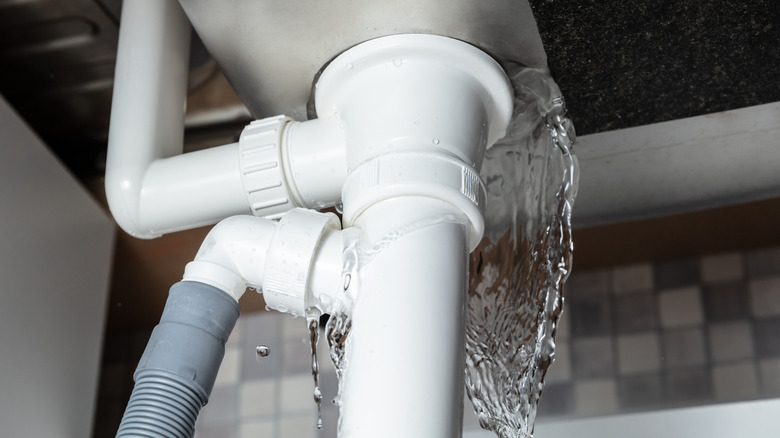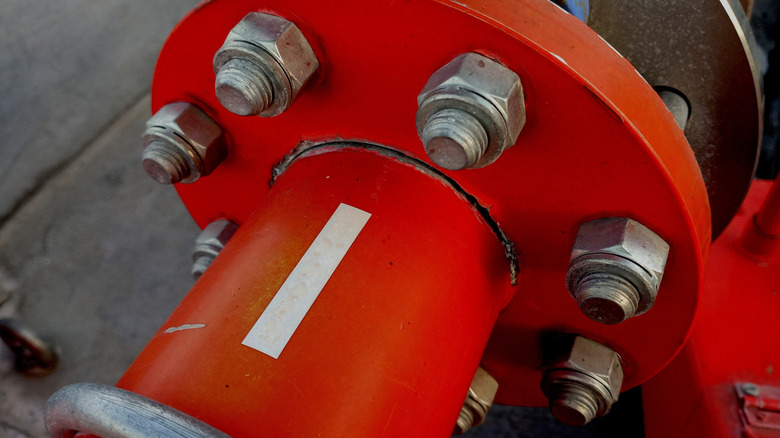The DIY Plumbing Mistake That Will Flood Your Home
You do it because it seems to make sense. In most aspects of human endeavor, the solution to having too little of something is to have more of it. So when we tell you that over-tightening plumbing fixtures is a mistake, it sounds like madness. Tight fixtures are the ones that don't leak, right?
Well, no. Properly tightened fixtures don't leak, and sometimes those shouldn't be very tight at all. This counterintuitive bit of secret knowledge might be the result of the sheer weirdness of plumbing fittings in general. Spend a few moments (let's be real, it takes an afternoon) examining all the connection methods in your local big-box hardware store and you might come away as confused as you arrived (after all, there are as many as 18 types of pipe fitting). Compression fittings, for one example, require compression ... but not too much, or you'll deform the metal and ruin the joint. Then there are flare connections, which require you to deform the metal in advance, in a manner so precise as to seem unlikely. Some connections aren't threaded at all and simply push together, but they have to be sealed with solder or adhesive. Other push-to-fit connectors only require the push itself. And even plain old threaded joints with the exact same thread specs might be incompatible depending on their taper.
A lot of these rules rely on exactly the right amount of compression to work. When tightening is involved, rather than just pushing parts together, it's often possible to increase your odds of leaking as you increase the tightness beyond the ideal point. This can be terribly unintuitive, so let's look at why it happens.
Here's why, in plumbing, too tight is the thing to worry about
In a lot of cases, "hand-tight" is all that's required of a plumbing fitting. You've encountered this even if the only plumbing you've ever done is cleaning out a P-trap. Whenever plastic, rubber, or soft metal parts are involved in the connection between pipes, torquing the joint as hard as you can with a wrench can deform the soft components and cause them to fail to seal properly, which is their job. When you over-tighten a compression fitting — most often seen on small-diameter metal or plastic tubing — it can damage the tube itself. Since these systems are usually under pressure, this will reveal itself in the form of a leak.
And sometimes, especially with plastic fittings, over-tightening can damage the fitting itself. Aggressively tightening a connection can split Schedule 40 and even Schedule 80 PVC. And stripping even an iron pipe's threading (or any other pipe's threading) can have the same effect. That is, mating parts that don't fit together — and can never be properly tightened. You might be thinking that PTFE tape will save you here, but it's not always the right solution (or even a solution at all). Compression fittings aren't sealed at the threads, so all tape can do is make the ferrule that does the actual sealing less likely to seat and seal properly. And while PTFE tape is a good idea on most other threaded metal pipes, you'll never need plumber's tape for PVC, soldered copper plumbing pipes, or PEX fittings.
So, then, we've established that overtightening your pipes is the accident that's going to flood your home and grow mold under your flooring. Now, how can you feel when it's too tight, or not tight enough?
With DIY plumbing, how tight is too tight?
But how do you know you've gone too far in tightening a plumbing fitting? Not being able to disassemble it is a dead giveaway, but you're rarely going to be trying that on a joint you just made. Tool marks and rounded corners where a wrench was used too aggressively are a sign of possible over-tightening of a compression joint, as is deformation of the tube or ferrule itself. Indeed, deformation and cracks caused by stress are two key ways to identify joints that are too tight for the material in question. Unfortunately, the most common sight of over-tightening is probably ... leaking.
So how much should you tighten various plumbing fittings to avoid running into that leaking problem in the first place? For compression fittings, use a gap gauge or Superlok's built-in i-Fitting gauge to determine when tight is tight enough. Pipes with NPT (National Pipe Thread) threading should be hand-tightened, then no more than an additional 1-2 turns with a wrench. The same general rule — finger-tight plus a turn or two – applies to PVC fittings, though you might want to proceed with caution, since they're comparatively easy to split. For other connections, like those around sink drains and anything with a slip joint that needs tightening, hand-tighten and check thoroughly for leaks, only getting a wrench involved if you need to.


